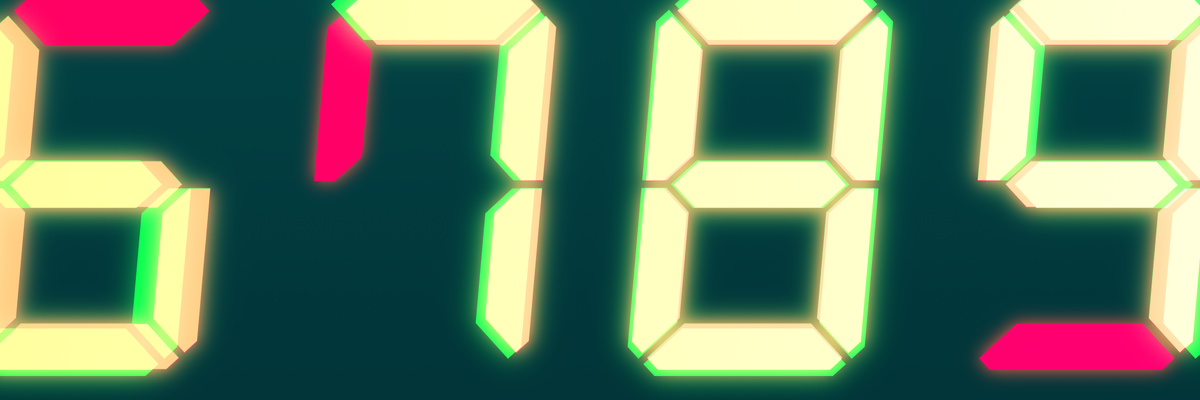Weeknotes 2022.5: missing pieces

I’ve been in the process of editing a video with a running count of something in the corner. For this, I wanted to use a seven-segment display style typeface. Unfortunately, I’m very particular about what I like in seven-segment displays. For instance: do you draw a 6 with the top segment filled in to extend the ascender (no); do you draw a 7 with the right-top segment filled in as a giant, unwieldy serif (no); do you draw a 9 with the bottom segment filled in (if you don’t draw the top segment on the 6, also no.) While there’s a list of typefaces simulating seven-segment displays on the Segment Displays fandom wiki (a website that exists because of course it does) this doesn’t make it clear how they render numerals. And also: what about TrueType variants? What about typefaces that aren’t monospaced, destroying the seven-segment illusion? In the end, I downloaded a small arsenal of font-editing tools (ending up with FontForge, an app that was definitely not designed for the Macintosh) and modified the open-source DSEG7 for my requirements. Let it be known that I have my ways of having fun at the weekend.

Bulb Watch: The ‘Firefly’ crocuses have started opening whenever we get one of our brief flashes of sun on the balcony, and it’s a delight. The daffodils are starting to open up, too. The muscari remain overwhelmed, but still lovely. The heather is well on its way into bloom too. I’m seeing tiny buds of new growth all over the balcony: lovely, but ominous given that we’ve barely entered February.



Often, I’ll put game shows on YouTube on in the background while I work or to help me relax, and this has led me to look at Lingo—i.e. the game that clearly inspired Wordle. It was revived for ITV in 2021 with Adil Ray as a ‘pure’ word game, but if you go back a bit further—e.g. to the mid-2000s version on the American Game Show Network, or to the 1988 ITV version—you’ll see that the original format also included a bingo card mechanic (hence the name “Lingo” = “language” + “bingo”) where people had to randomly select balls from a hopper in the hope of completing a bingo card. I do wonder why this mechanic disappeared in the new version—and it does follow a trend of similar things (e.g. when Catchphrase was revived in 2013, the money randomiser used at the start of each round throughout the 80s and 90s was nowhere to be seen.) Maybe this simply removes an additional frippery that got in the way of the core game mechanic, making the game wholly about skill rather than luck—I’d hypothesise people’s tastes have shifted over the last 20 years to a point where people would rather watch someone win a game based on their own quizzing ability rather than on luck. On the other hand, I do wonder if the 2007 TV phone-in scandal had a part in it: while these might not have concerned the gameplay of the shows themselves, I’m willing to speculate that there was enough splashback for more stringent probity and compliance procedures to put an end to elements that were based solely on luck. After all, it’s much harder to theorise that a ‘random’ element of your game show is rigged by the producers if there’s no random element in the first place.
